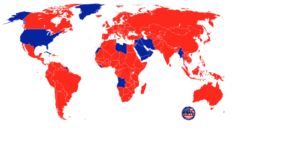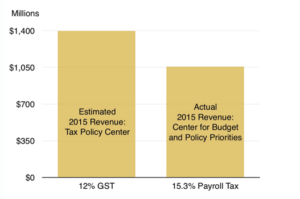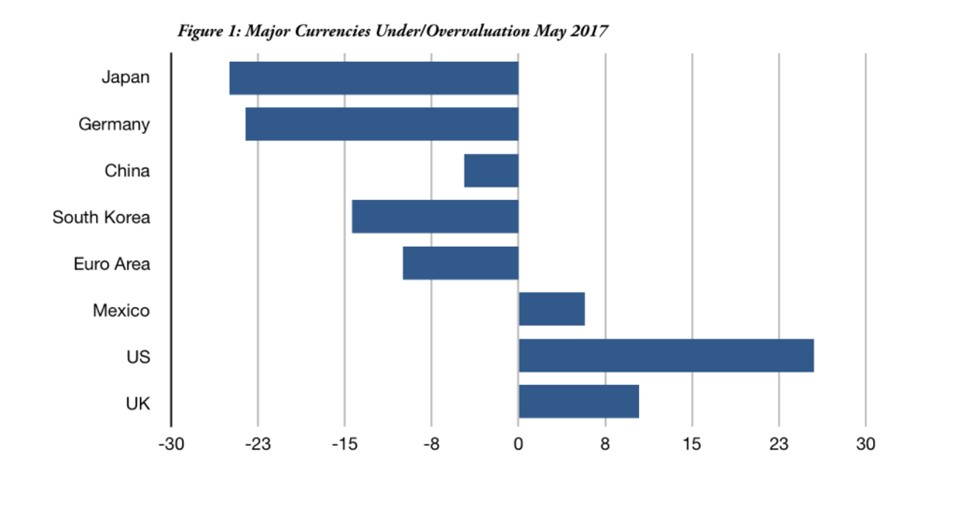My last day in North Carolina began with a visit to The Forge Greensboro, a Makerspace that also functions as an accelerator for startup businesses. My hosts, Brent Christiansen, President and CEO of the Greensboro Chamber of Commerce, Loren Hill, President of the neighboring High Point Economic Development Corporation, Mary Wilson from the Economic Development Partnership of North Carolina, and I with Joe Rotondi, Executive Director, and he gave us a tour. He said, “The Forge was started in 2014 by Andy Zimmerman as an entirely volunteer-run organization in a 3,400-square-foot space building down the street. It was only open three nights a week and was completely volunteer run. As membership quickly grew beyond the capacity of the building, we moved to this 8,000-square-foot space in the fall 2016, and I was hired as the full-time executive director. We are the largest and most comprehensive of the community-type makerspaces in North Carolina. Other larger makerspaces are affiliated with universities”
He explained, “We are a non-profit and have about 190 members. We have about a dozen people who teach classes and help maintain the equipment. Our space is split up into office space, a conference room, and manufacturing space. Most of the equipment has been donated, and all members are given affordable access to machinery for woodworking, machining, welding, sewing, 3D printing, laser engraving, electronics and ceramics.”
We met two members of The Forge during the tour: Marc Pinckney and Sam Rouse. Marc is using the equipment to build custom entertainment centers, and Sam is building custom furniture. Sam said that he moved to Greensboro to start Sam Rouse Furniture specifically because of the woodworking equipment available at The Forge. He has been able to launch his company faster and get new clients. I was pleased to learn that he is even making some wood furniture for BuzziSpace that I visited on my first day.
When I checked out the website to write this article, I learned that The Forge Greensboro launched a “Forge Ahead” fundraising campaign last week on October 11th. “The Forge is an amazing outlet for creative people, as well as a resource for employers looking to hire skilled workers,” said Executive Director Joe Rotondi. “The “Forge Ahead” campaign will equip our makers with the tools they need to actualize their ideas, as well as expand our mentor and career development programs.”
Our next stop was Winston-Salem, one of the three major cities in the Piedmont Triad region. We met Robert Leak, Jr., President of Winston-Salem Business Inc., at Whitaker Park to tour of one of the buildings on the 125-acre, 1.7 million sq. ft. campus that was donated by the R. J. Reynolds Tobacco Company in April 2017. The recipient was the Whitaker Park Development Authority Inc., a nonprofit corporation created in 2011 by Winston-Salem Business Inc., the Winston-Salem Alliance and Wake Forest University.
Bob Leak and Loren Hill commented that the building we toured was the tobacco plant that hosted tours for elementary school children when they were young. Although the building has been closed for a few years, it had been maintained R.J. Reynolds, and the utilities were now being paid for by Winston-Salem Business Inc. It was mind boggling to walk through this enormous 850,000 sq. ft. building and imagine the millions of cigarettes that had been produced in this plant. Fortunately, the layout will facilitate the building being redeveloped into space for seven to eight different companies as there are several entrances/exits and roll-up doors for deliveries around the perimeter of the building. They already have five companies interested in the space already.
This set the stage for our drive into the heart of Winston-Salem where we drove by several much older buildings that were previously owned by R.J. Reynolds when tobacco production was in the heart of the city. The largest building was sold to the Wake Forest Baptist Medical Center in 1986, and the rest of the downtown plants’ land and buildings were donated at the same time to the City of Winston-Salem because R.J. Reynolds was moving to a modern manufacturing center 15 miles north of the city.
We had a brief tour and lunch at one of these former tobacco plant buildings that has been re-purposed as the Wake Forest Innovation Quarter by “a partnership between the city and state, Wake Forest Baptist Medical Center, Wake Forest University and Wexford Science and Technology, a Baltimore-based primary developer.
At lunch, we met Allen Joines, Mayor of Winston-Salem and Eric Tomlinson, PhD, who wears three “hats”— President of Wake Forest Innovation Center, Chief Innovation Officer of the Wake Forest Baptist Medical Center, and Professor of Physiology and Pharmacology at the Wake Forest School of Medicine.
Mayor Jones said, “Winston-Salem began the course to become a knowledge-based economy in 1995. We started to focus on innovation, and there was strong collaboration in the city. The Wake Forest Innovation Quarter is becoming an economic engine for the state. A lot of the companies in the center were the relocation of companies already in Winston-Salem, but we are starting to see businesses forming around the research center. The Innovation Quarter has become a great place to Work, Live, Learn and Play because of the repurposing of some buildings as residential apartments.”
Dr. Tomlinson said, “We are the fastest growing innovation center in the U.S. by size and number of people employed. We are the new hub for innovation in biomedical science, information technology, digital media, clinical services and advanced materials. We have 1.9 Million sq. ft. of space covering 337 total acres, and currently, we have 3,453 people working here, 152 companies, five academic institutions with 1,395 students enrolled this fall. We have 619 research units, and the 78 service companies generate $4.8 million in revenue. Every high-tech job creates several support jobs. People like working at the center, and they have access to about 270 different events monthly. We celebrate Juneteenth, a yoga event, and a bicycle race.”
According to the website, the five academic institutions are: Wake Forest University, Winston-Salem State University, Salem College, the University of North Carolina School of the Arts and Forsyth Technical Community College. It also features the following highlights of the center:
- ” Patented university technologies available for licensing
- Cost-effective scientific services
- An advanced telecommunications structure, with a fiber optic ring running throughout
- Venture capital opportunities, with many top venture capital firms in North Carolina within a 75-mile radius
- Business incubation, capacity planning, entrepreneurial counseling and training”
Dr. Tomlinson said, “We have weekly meeting of entrepreneurs in our center every Tuesday evening. We have program topics that benefit entrepreneurs. Flywheel co-working innovation space located at the Center for Design Innovation was our first incubator, where people can come together to work on the fly, learn and share knowledge. In January, we will add a Maker Space and “Tinker” shop with manufacturing equipment.”
Our last stop of day before going to the airport to return home was Thomas Built Buses, Inc. in High Point, where we met with Caley Edgerly, President/CEO. Mr. Edgerly said, “Thomas Built buses is the largest bus manufacturer in North America. “We built our Saf-T-Liner C2 plant in 2004, which was a state of the art $100MM investment by our parent company, Daimler. We produce thousands of vehicles each year across our two main manufacturing facilities in High Point, and we have approximately 1,900 employees at these locations.”
He explained, “The company was founded in 1916 by Perley A. Thomas to build streetcars. In just a few years after the company’s founding, Thomas streetcars were carrying passengers in many of North America’s largest cities —notably in New Orleans on the line that was the inspiration for “A Streetcar Named Desire,” the famous play written by American playwright Tennessee Williams. The company switched to building school buses in 1936. In 1998, Thomas Built Buses became a wholly-owned subsidiary of Freightliner LLC, and Daimler purchased Freightliner in 2000. Freightliner is now known as Daimler Trucks North America LLC, the largest heavy-duty truck manufacturer in North America. The chasses they use come from the Daimler Trucks plant in South Carolina.”
Then, Mr. Edgerly gave me a tour of the plant where I first watched six robots weld the front end of the bus and one robot stack the assembly. The paint booth is large enough to fit their 30-ft. bus, and three robots do all of the painting. I got to watch a bus being matched and attached to a chassis.
I asked when they had transformed into a lean company, and he said that the plant was set up in a lean way, so this plant gave birth to the Lean Way for the company. Now they operate under the Daimler TOS (Truck Operating System).
I asked what are the advantages of being in High Point, and he said, “Continuation of the heritage of the company, ability to have long-term employees, and good supply of new workers in the region. When we had to hire 50 new workers, we had 1,000 applicants. We are also close to the center of our manufacturing suppliers, and we are located in the middle of the population centers on the East Coast. The traditions of manufacturing are passed down from generation to generation.”
As I ended my trip to North Carolina, I felt good about the potential for future growth of the more diverse manufacturing sectors that are now in the region. With low tax rates, a favorable business climate, programs for apprenticeships and employee training, Maker Spaces, incubators, and innovation hubs such as the Wake Forest Innovation Quarter, North Carolina is poised for a manufacturing boom in the future.


